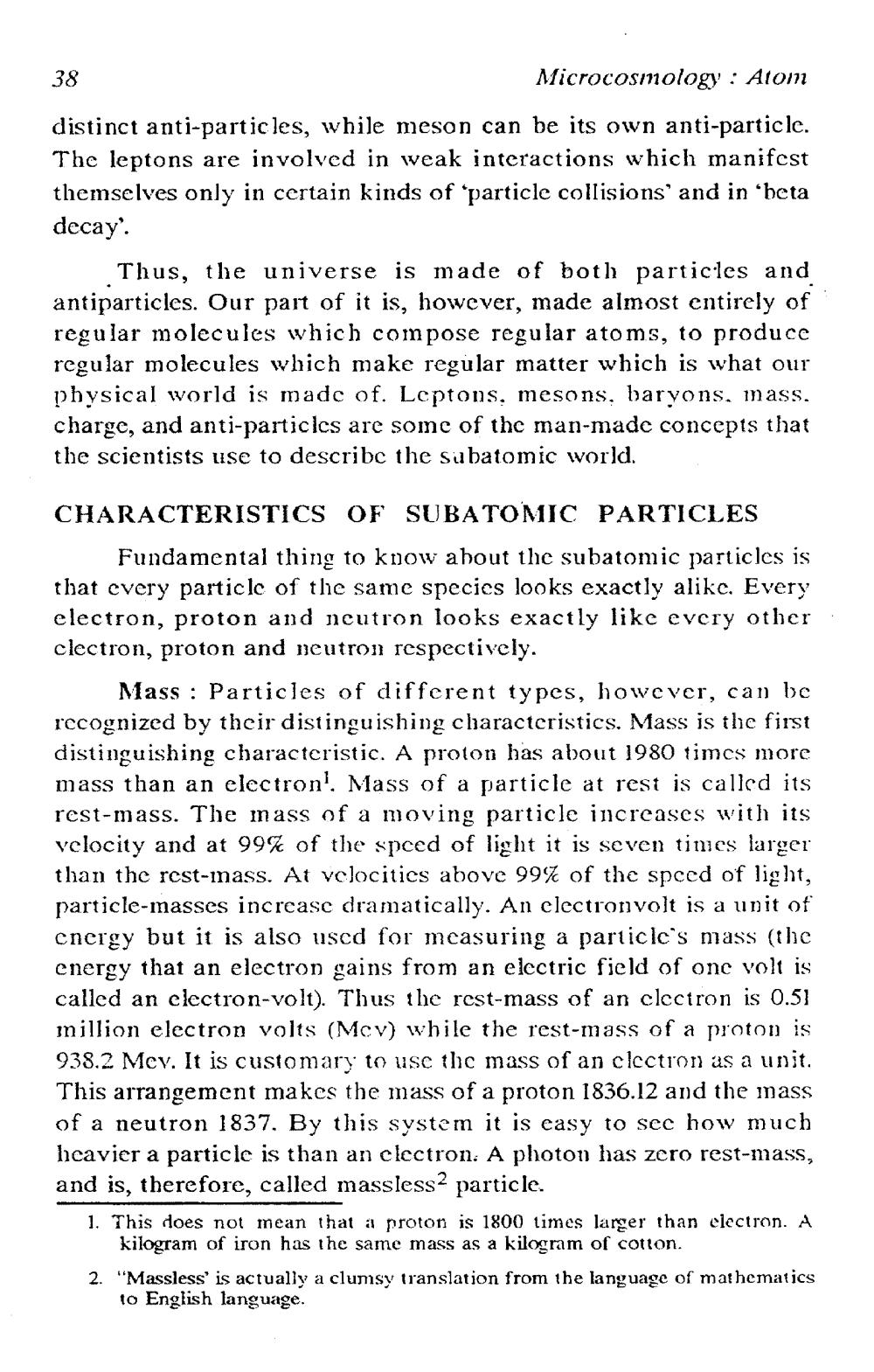________________
38
Microcosmology : Atom distinct anti-particles, while meson can be its own anti-particle. The leptons are involved in weak interactions which manifest themselves only in certain kinds of particle collisions’and in 'heta decay.
Thus, the universe is made of both particles and antiparticles. Our part of it is, however, made almost entirely of regular molecules which compose regular atoms, to produce regular molecules which make regular matter which is what our physical world is made of. Leptons, mesons, baryons, mass. charge, and anti-particles are some of the man-made concepts that the scientists use to describe the subatomic world.
CHARACTERISTICS OF SUBATOMIC PARTICLES
Fundamental thing to know about the subatomic particles is that every particle of the same species looks exactly alike. Every electron, proton and neutron looks exactly like every other clectron, proton and neutron respectively
Mass : Particles of different types, however, can be recognized by their distinguishing characteristics. Mass is the first distinguishing characteristic. A proton has about 1980 times more mass than an electron! Mass of a particle at rest is called its rest-mass. The inass of a moving particle increases with its velocity and at 99% of the speed of light it is seven times larger than the rest-inass. At velocities above 99% of the speed of light, particle-masses increase dramatically. An electronvolt is a unit of energy but it is also used for measuring a particle's mass (the energy that an electron gains from an electric field of onc volt is called an electron-volt). Thus the rest-mass of an clcctron is 0.51 inillion electron volts (MCV) while the rest-mass of a proton is 938.2 Mev. It is customary to use thic mass of an clcction as a unit. This arrangement makes the mass of a proton 1836.12 and the mass of a neutron 1837. By this system it is easy to see how much heavier a particle is than an electron. A photon has zero rest-mass, and is, therefore, called masslessa particle. 1. This does not mean that a proton is 1800 times larger than electron. A
kilogram of iron has the same mass as a kilogram of cotton. 2. "Massless' is actually a clumsy translation from the language of mathematics
to English language.




